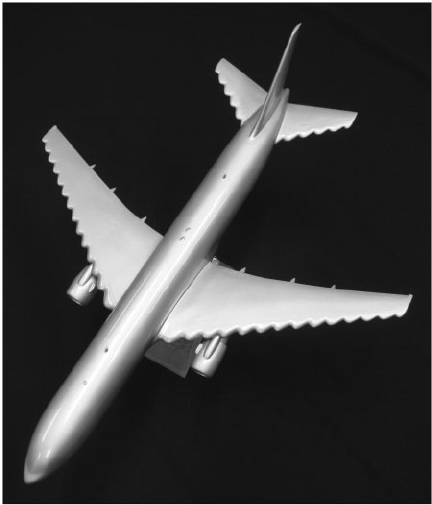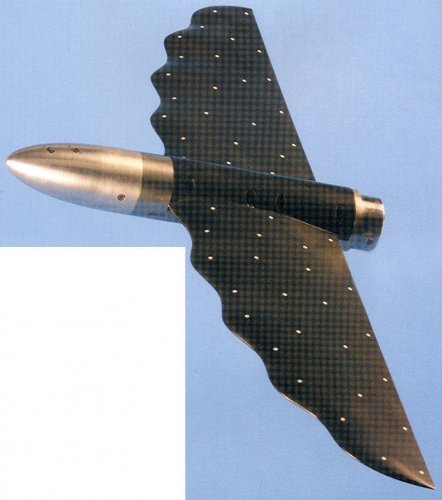You are using an out of date browser. It may not display this or other websites correctly.
You should upgrade or use an alternative browser.
You should upgrade or use an alternative browser.
scalloped leading edge
- Thread starter Justo Miranda
- Start date
Vahe Demirjian
I really should change my personal text
- Joined
- 28 February 2013
- Messages
- 816
- Reaction score
- 539
The Orion III (aka Pan Am Space Clipper) is a fictional spaceplane and not a real spaceplane project. The leading edges of the Orion III's wings do not appear scalloped (see https://www.deviantart.com/bagera3005/art/Orion-III-Spaceplane-2001-A-Space-Odyssey-691129306). I'm not sure about the identity of the object on the left image with scalloped wings.I am curious about the purpose of this type of leading edge.
I have seen something similar in the Orion III Pan Am "Space Clipper" only.
Does anyone have any additional information?
shedofdread
ACCESS: Top Secret
- Joined
- 14 November 2009
- Messages
- 582
- Reaction score
- 353
Scalloped trailing edges can be used to improve CLmax (using energy from the +ve pressure side to promote attachment on the suction side).
The first scan you post looks rather like a 'roll up' wing I saw some time ago. The scallops give the effect of ribs and stiffen the surface somewhat.
The first scan you post looks rather like a 'roll up' wing I saw some time ago. The scallops give the effect of ribs and stiffen the surface somewhat.
- Joined
- 1 May 2007
- Messages
- 2,458
- Reaction score
- 1,450
Interesting . . .Scalloped trailing edges can be used to improve CLmax (using energy from the +ve pressure side to promote attachment on the suction side).
A lot of early and Great War aeroplanes had wire trailing edges, I assume for structural reasons, that gave a scalloped trailing edge. Among these were such successful types as the Fokker Dr.I and D.VII, and the SPAD VII and XIII.
I wonder if their success was in any way due to the effect you describe, albeit unbeknownst to the aircraft's designers and operators . . .
cheers,
Robin.
- Joined
- 1 November 2009
- Messages
- 638
- Reaction score
- 384
Those early aircraft had a wire or cord strung along the trailing edge of the ribs in the wing structure. The covering material would tighten and shrink as the dope protective coat dried and cured. This shrinking is what caused the scolloped trailing edge.Interesting . . .Scalloped trailing edges can be used to improve CLmax (using energy from the +ve pressure side to promote attachment on the suction side).
A lot of early and Great War aeroplanes had wire trailing edges, I assume for structural reasons, that gave a scalloped trailing edge. Among these were such successful types as the Fokker Dr.I and D.VII, and the SPAD VII and XIII.
I wonder if their success was in any way due to the effect you describe, albeit unbeknownst to the aircraft's designers and operators . . .
cheers,
Robin.
As for the leading edge of the Orion III wings, those are intakes for the air breathing engines embedded in the wings.
I think this type of leading edge is inspired by Humpback whale flippers, a fairly slow swimming species (might give a clue as to the aerodynamic regime this is intended for).
Spanwise flow (dog tooth on steroids)?
Spanwise flow (dog tooth on steroids)?
- Joined
- 11 March 2012
- Messages
- 3,016
- Reaction score
- 2,687
For a more detailed explanation, ask a hump-backed whale. They have have huge pectoral fins about 1/3 the length of their bodies. Hump-backs' pectoral fins have scalloped leading edges, presumably to regulate water flow. Since their species has inhabited this planet a few million years longer than humans, they understand fluid dynamics far better than any human.
A few humans have tried to mimic hump-back whale fins in wind-tunnels or wind-turbines.
A few humans have tried to mimic hump-back whale fins in wind-tunnels or wind-turbines.
- Joined
- 8 March 2009
- Messages
- 937
- Reaction score
- 914
There is a company called "whale power" that has been trying to bring this idea to market for ages. They claim better CL, delayed stall, ect without any real increase in drag. Based on their website it looks like they are focusing on turbines now; https://whalepowercorp.wordpress.com/
Although they aren't the only ones to put this idea forward;

Although they aren't the only ones to put this idea forward;

- Joined
- 19 July 2016
- Messages
- 3,725
- Reaction score
- 2,686
The sandpaper nature of shark bodies has also been brought up before. Did anything come of that?
shedofdread
ACCESS: Top Secret
- Joined
- 14 November 2009
- Messages
- 582
- Reaction score
- 353
Some F1 cars have a less glossy finish than others.....The sandpaper nature of shark bodies has also been brought up before. Did anything come of that?
Similar threads
-
US Navy Type Spec 146: rivals to the P-3 Orion
- Started by Pioneer
- Replies: 37
-
Westland proposal to Spec. M.148T
- Started by hole in the ground
- Replies: 4
-
-
-


